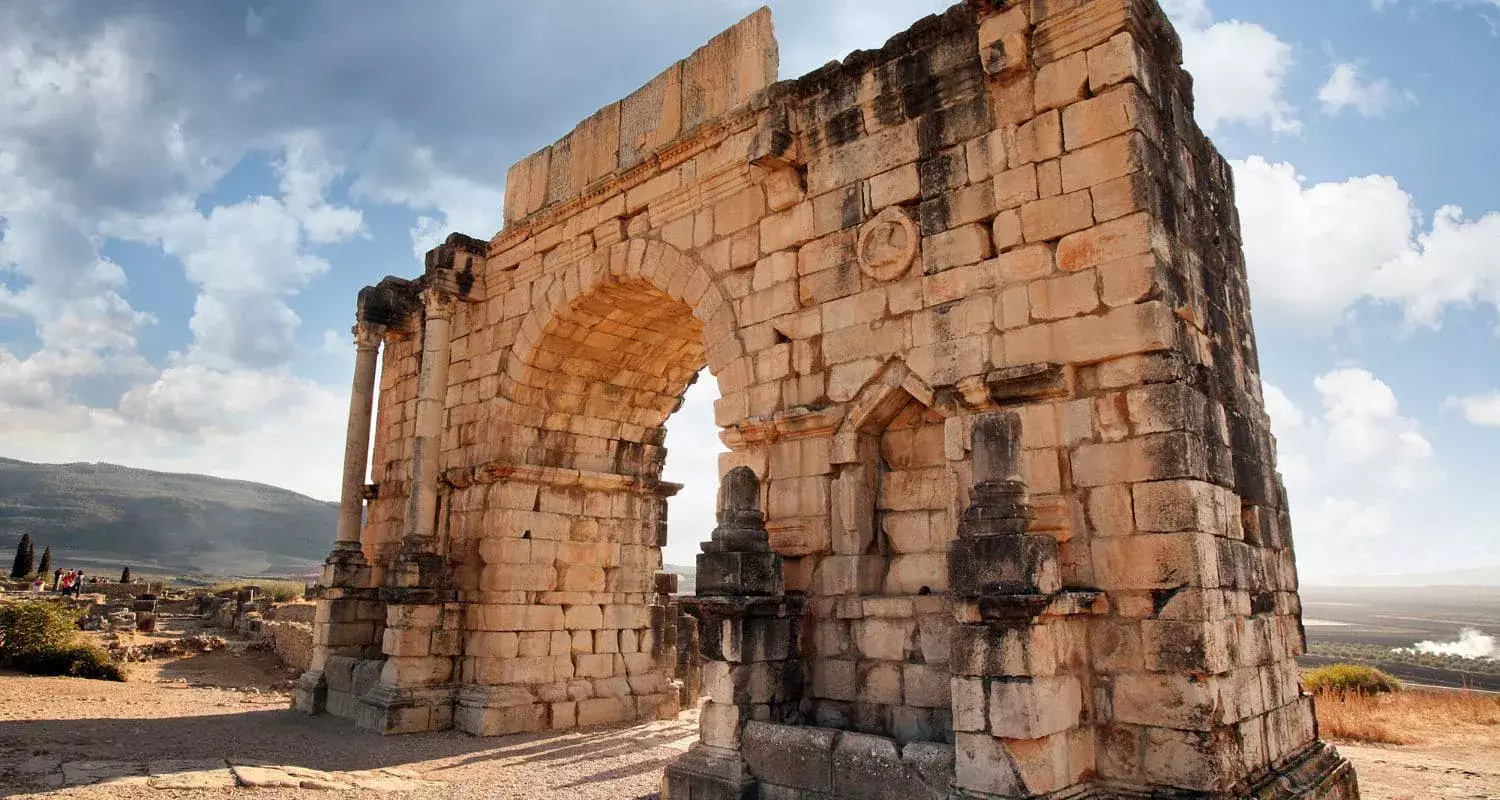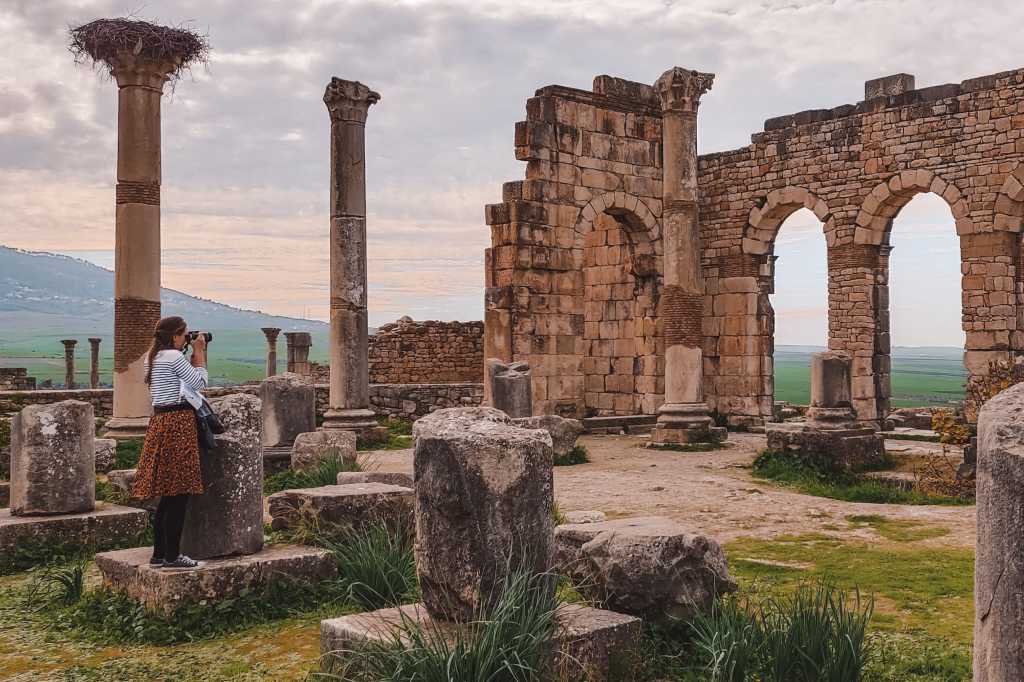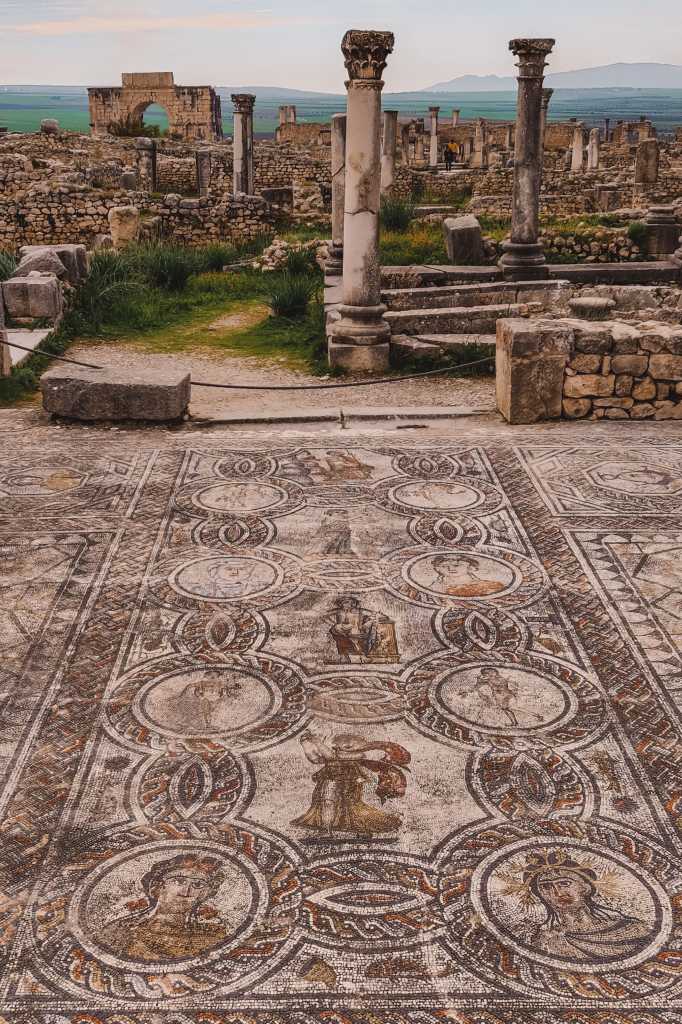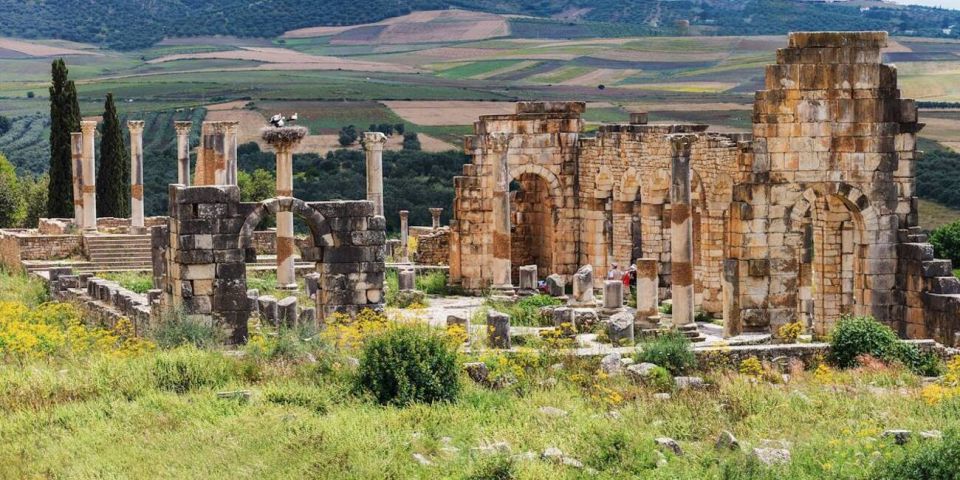Introduction: The Enchantment of Volubilis
Nestled in the fertile plains of northern Morocco, the ancient city of Volubilis is a breathtaking blend of historical eras and architectural brilliance. As one of North Africa’s most significant archaeological sites, it serves as a window into the lives, culture, and ingenuity of its ancient inhabitants. Its history spans several periods, each leaving an indelible mark that continues to intrigue scholars and captivate visitors.

Origins and Early Flourishing
Founded in the 3rd century B.C., Volubilis initially thrived as the capital of the Kingdom of Mauretania. This strategic location, surrounded by fertile lands, made it a hub for agricultural trade. The city was known for its production of olives and grain, vital commodities in the ancient Mediterranean world. Berber and Phoenician influences evident in its early development highlight its importance as a crossroads of cultures even before Roman involvement.

Roman Transformation: A Jewel of the Empire
Under Roman rule, beginning in the 1st century A.D., Volubilis reached its zenith as a provincial capital. The Romans expanded and enhanced the city, infusing it with their architectural and engineering prowess. Among the most striking remnants from this period are:
- The Basilica and Forum: Central to Roman civic life, these structures symbolize the administrative and judicial functions of the city.
- The Triumphal Arch: Erected in honor of Emperor Caracalla, this monument reflects both Roman engineering excellence and the city’s loyalty to the empire.
- Exquisite Mosaics: Found in private villas, these intricate artworks depict mythological scenes, including Hercules’ labors and Bacchus’ triumph, showcasing the artistic sophistication of the period.
Volubilis also boasted advanced infrastructure, including aqueducts, public baths, and olive presses, emphasizing its role as a thriving agricultural and trade center.
The Idrisid Legacy
Though the Roman Empire’s hold on Volubilis waned by the late 3rd century, the city’s story did not end. In the late 8th century, it gained renewed significance as the capital of Idris I, the founder of Morocco’s Idrisid dynasty. This period marked the beginning of Morocco’s Islamic history. Idris I’s presence solidified Volubilis’ importance as a cultural and political center, even though the dynasty later moved its capital to Fes.

The nearby town of Moulay Idris, where Idris I is buried, remains a sacred site, drawing pilgrims and preserving the spiritual connection between the region and its historical roots.
A UNESCO World Heritage Site
In 1997, Volubilis was designated a UNESCO World Heritage Site, recognizing its unparalleled historical and cultural significance. The site’s well-preserved ruins provide invaluable insights into the confluence of Berber, Roman, and early Islamic influences. It stands as a testament to the resilience of human creativity and the enduring legacy of civilizations past.

Why Volubilis Matters Today
Volubilis is not merely a collection of ancient ruins; it is a narrative of human ambition and adaptation. Its architectural grandeur and intricate mosaics speak of a cosmopolitan city that bridged empires. The enduring olive presses and aqueducts remind us of the ingenuity needed to sustain life in a dynamic environment.

For visitors, Volubilis offers a tangible connection to history. Walking through its streets, past the triumphal arch and mosaic-laden villas, one can almost hear echoes of bustling markets, Roman orators, and Berber traders. It is an experience that transcends time.
Conclusion: A Journey Through History
Volubilis remains a jewel of ancient heritage, embodying the convergence of cultures and the timeless achievements of its inhabitants. From its origins as a Mauretanian capital to its flourishing under Roman rule and its role in early Islamic history, Volubilis is a testament to the resilience and creativity of human civilization. It invites us to explore, learn, and marvel at the enduring legacy of a city that once stood at the heart of empires.

